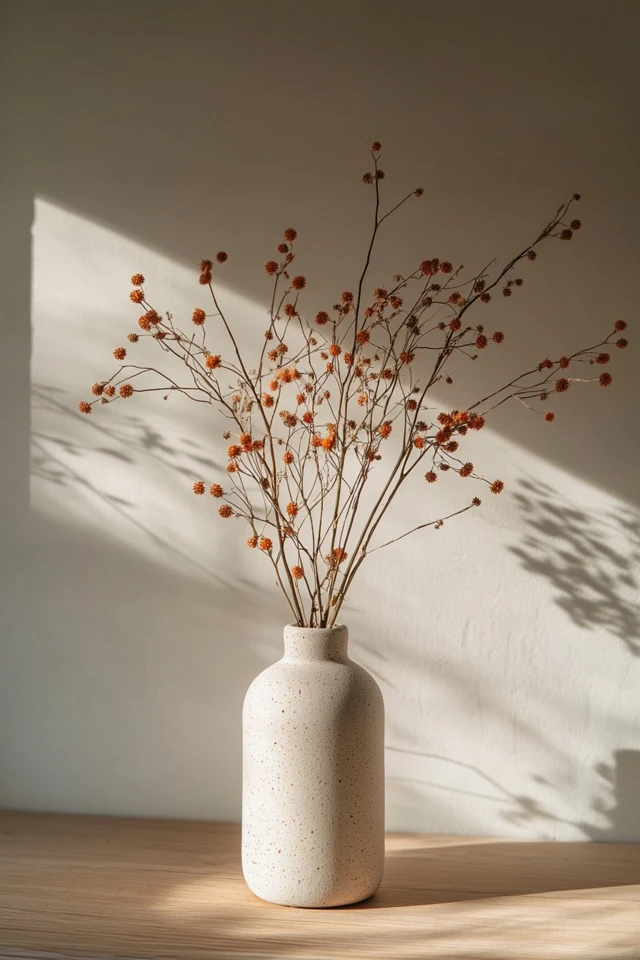Introduction
Scandinavian design has always been about balance—whether it’s the interplay of light and dark, function and beauty, or the serene mix of earthy and bright tones. While the typical Nordic palette is often associated with whites and neutrals, the art of mixing earthy hues with vibrant accents can breathe new life into Scandinavian interiors. This approach combines the calm of nature-inspired tones with the energy of brighter shades, resulting in spaces that feel grounded yet fresh.
I first experimented with this concept in my dining room, where I paired an earthy olive-green wall with vibrant mustard yellow cushions and light oak furniture. The combination was transformative—warm, inviting, and just bold enough to keep things interesting. It felt like the perfect blend of modern Scandinavian simplicity and playful energy, proving that you don’t have to choose between subdued and cheerful.
If you’re looking to elevate your Scandinavian space with a mix of earthy and bright tones, this guide will show you how to achieve that perfect balance. From choosing a cohesive palette to layering textures and decor, here are the best tips for creating a dynamic, harmonious interior.
The Perfect Design for You
Mixing earthy and bright tones is ideal for anyone who loves the minimalist elegance of Scandinavian design but wants to inject their space with warmth, vibrancy, and personality. This approach works for all kinds of spaces, from cozy apartments to larger, open-plan homes.
Picture a living room with muted beige walls, a terracotta-colored rug, and pops of bright teal or coral in the throw pillows and artwork. The earthy tones ground the space, while the brighter hues add a playful touch. Together, they create a space that feels both calm and full of life—a true reflection of modern Scandinavian style.
Picture Gallery
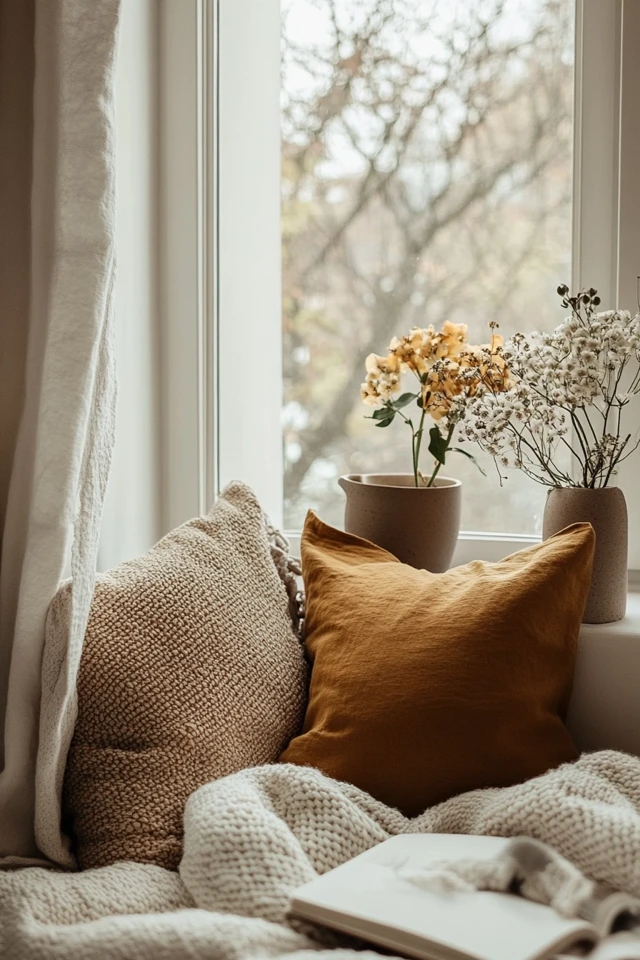
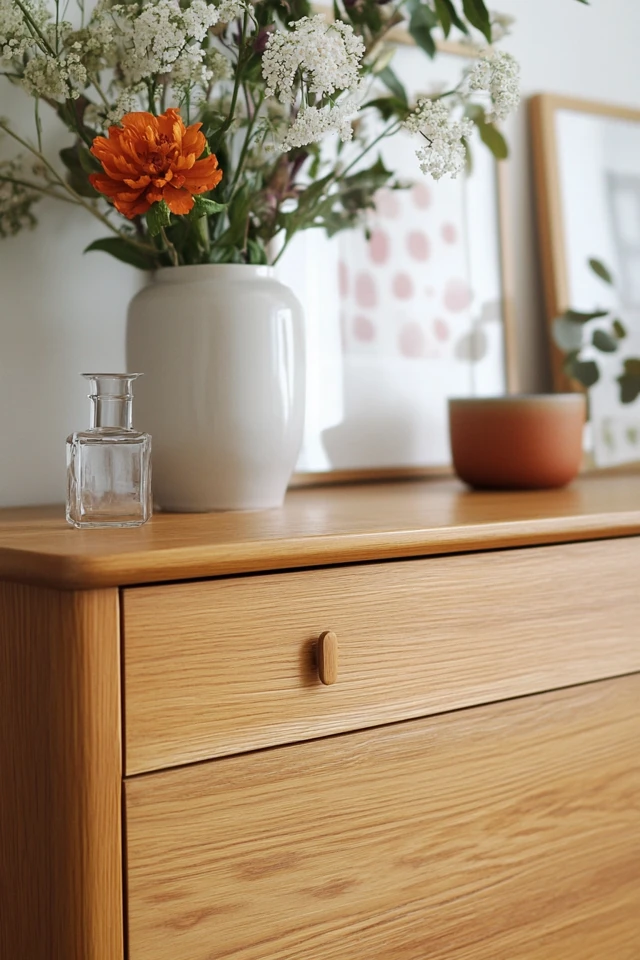
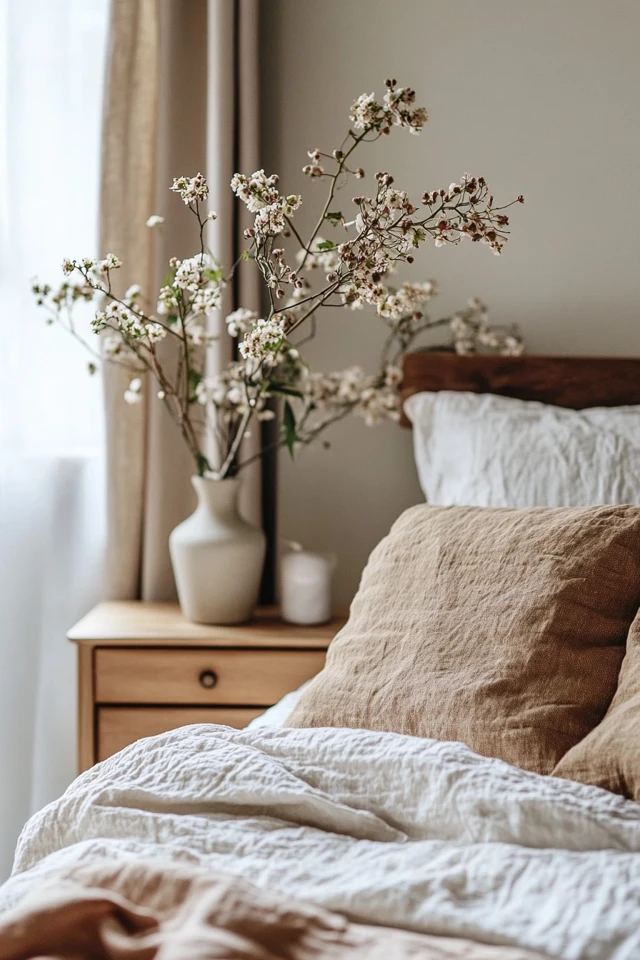
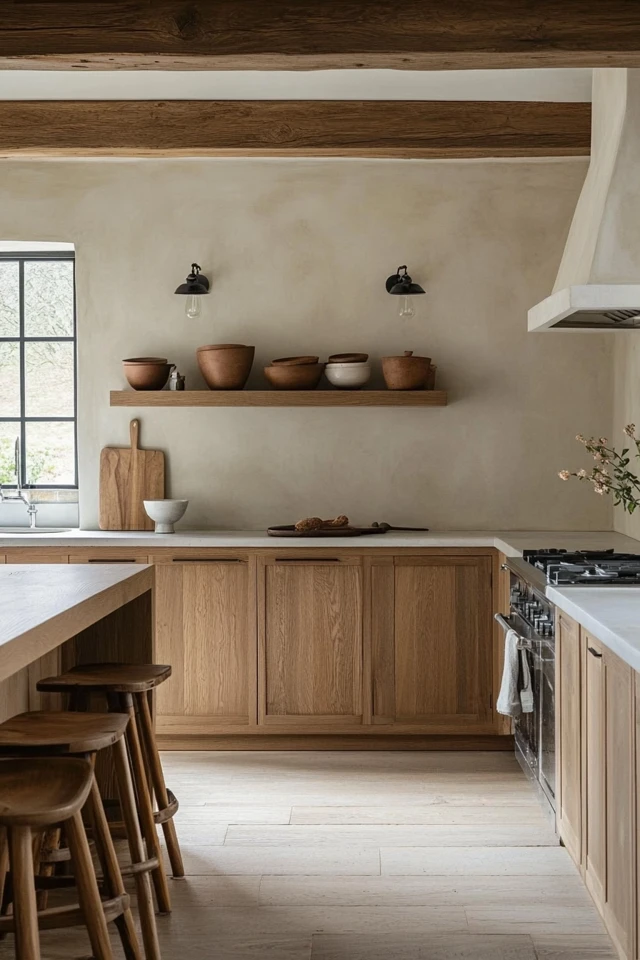
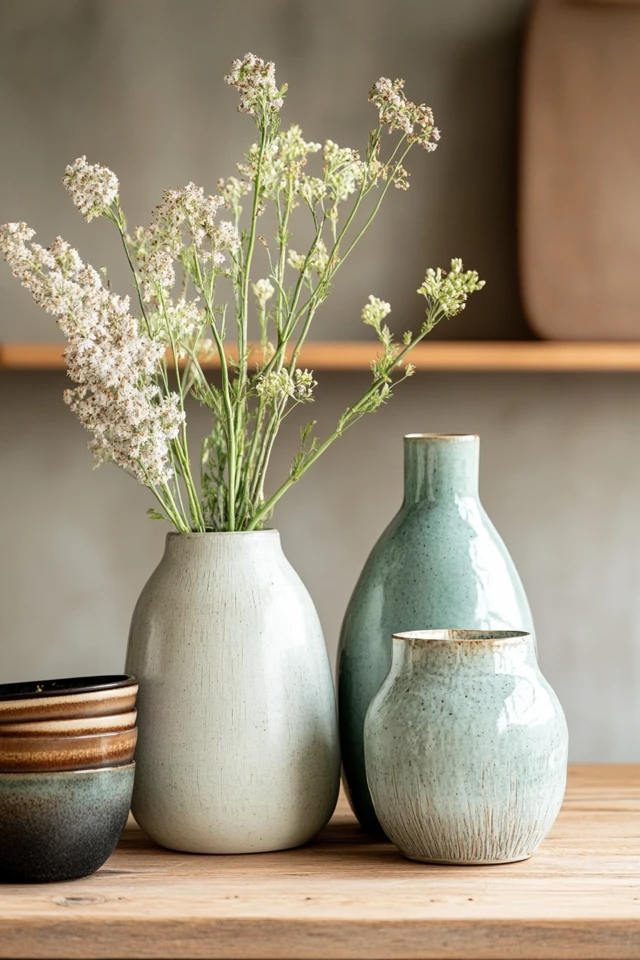
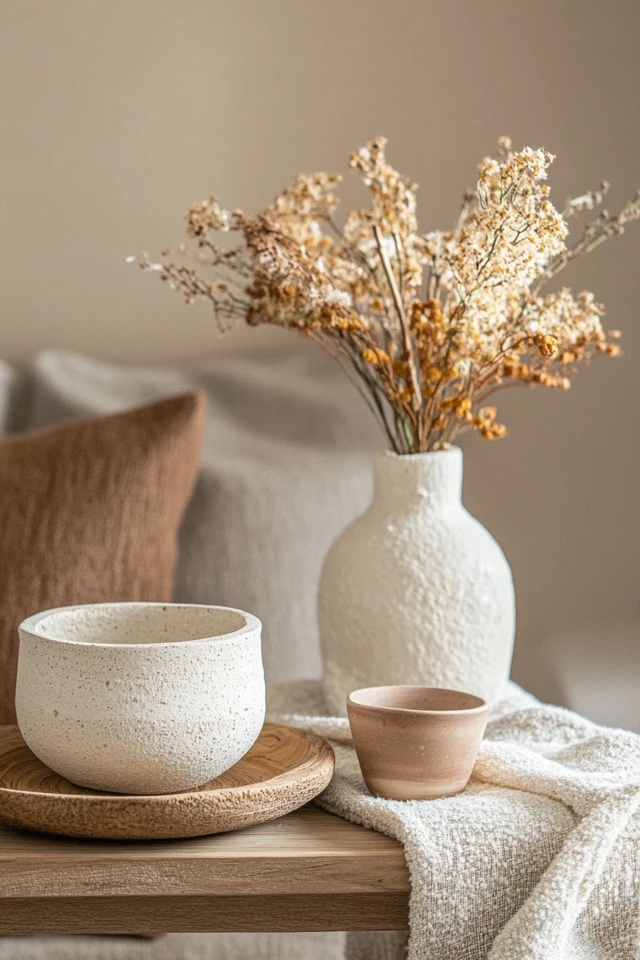
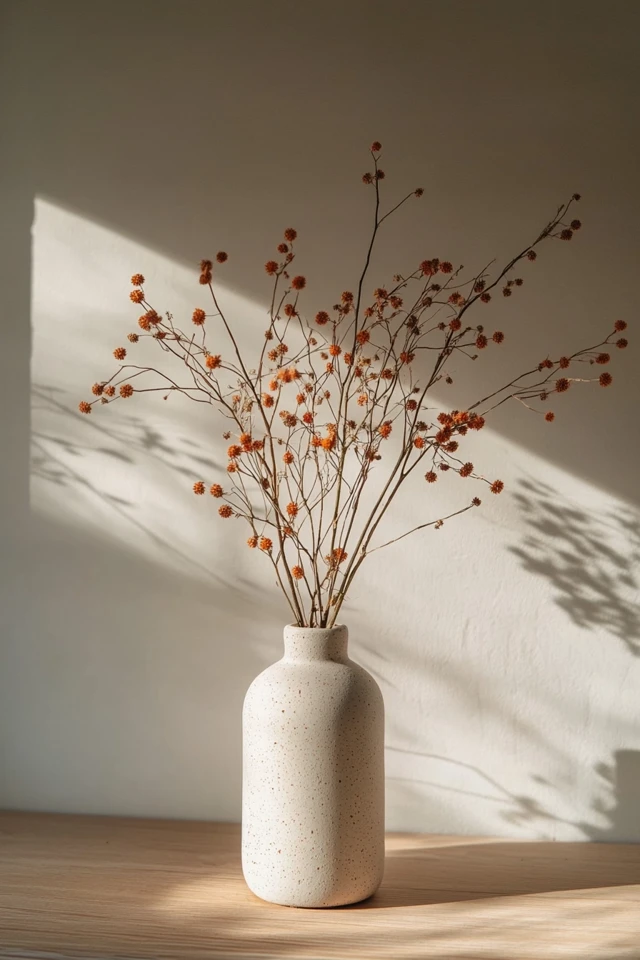
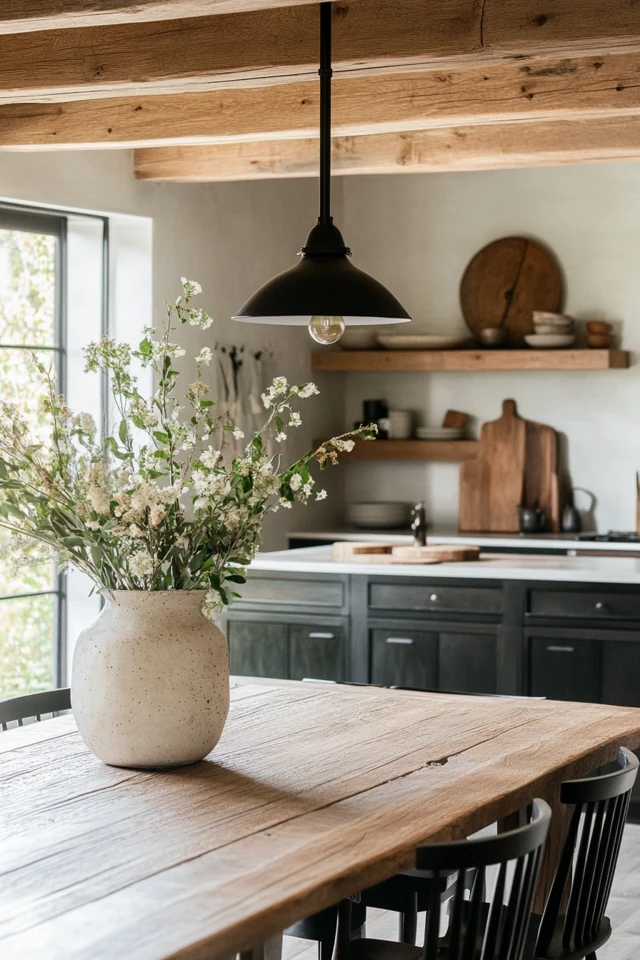
Why These Key Elements Work So Well Together
1. Neutral Base
Scandinavian design starts with a neutral base—white walls, beige furniture, or light wood flooring. This creates a clean canvas for layering earthy and bright tones.
- Why It Works: The neutral base ensures the space feels cohesive and balanced, allowing both earthy and vibrant accents to stand out.
2. Earthy Tones
Muted, nature-inspired hues like olive green, terracotta, mustard, and rust add warmth and depth to Scandinavian spaces.
- Why It Works: Earthy tones create a grounded, calming atmosphere while complementing the natural materials common in Nordic design.
3. Bright Accents
Pops of color—such as teal, coral, mustard yellow, or soft pink—inject energy and vibrancy into the room.
- Why It Works: Bright accents provide contrast and visual interest, keeping the space from feeling too monotone or subdued.
4. Natural Materials
Light wood, wool, linen, and jute pair beautifully with both earthy and bright tones, adding texture and grounding the overall design.
- Why It Works: Organic materials tie the colors together, ensuring the space feels cohesive and harmonious.
5. Layered Lighting
Lighting plays a key role in highlighting the interplay of colors. Use warm-toned lighting to enhance earthy hues and soft, diffused lighting to complement brighter accents.
- Why It Works: Proper lighting ensures the colors appear rich and inviting rather than harsh or flat.
How to Mix Earthy and Bright Tones in Scandinavian Spaces: Step-by-Step
1. Start With a Neutral Foundation
- Use light-colored walls, such as white, beige, or pale gray, to create a calming backdrop.
- Choose light wood or whitewashed flooring to maintain the airy feel of Scandinavian interiors.
2. Introduce Earthy Tones
- Add depth with furniture or decor in earthy shades like olive green, terracotta, burnt orange, or ochre.
- Use larger elements, such as an area rug, a sofa, or curtains, to anchor the space with these warm hues.
3. Layer in Bright Accents
- Add pops of bright color through throw pillows, artwork, vases, or small furniture pieces.
- Stick to 1–2 vibrant shades to keep the design cohesive and avoid overwhelming the space.
4. Use Natural Materials to Bridge the Gap
- Incorporate wooden furniture, woven baskets, or linen textiles to tie together the earthy and bright tones.
- Pair materials like wool and rattan with brighter elements for a balanced look.
5. Focus on Proportion
- Use earthy tones as the dominant palette (60–70%) and bright colors as accents (20–30%).
- Ensure the balance feels intentional by distributing the colors evenly throughout the room.
6. Add Depth With Textures
- Layer soft textiles like wool throws, jute rugs, or velvet cushions to add richness and variety to the palette.
- Use textured wall decor, such as woven art or ceramic pieces, to highlight both earthy and bright tones.
7. Incorporate Greenery
- Use potted plants or fresh greenery to complement the earthy tones and bring a natural element to the space.
- Choose plants with bright green leaves for an additional pop of color.
8. Use Patterns Sparingly
- Add subtle patterns, like geometric prints or stripes, to tie together the earthy and bright tones.
- Stick to minimalist designs to maintain the clean, Scandinavian aesthetic.
9. Play With Contrast
- Pair warm earthy tones (like rust or mustard) with cooler bright colors (like teal or light blue) for dynamic contrast.
- Use darker accents, such as charcoal or black, to ground the brighter shades.
10. Balance the Lighting
- Use warm, ambient lighting to enhance the richness of earthy tones.
- Position natural light or soft white bulbs to make brighter accents feel vibrant and fresh.
FAQ Section
1. Can I mix multiple bright tones in a Scandinavian space?
Yes, but limit the palette to 1–2 bright colors to maintain cohesion. Stick to muted or pastel versions of the hues for a more subtle look.
2. What’s the best way to introduce earthy tones without repainting walls?
Use furniture, rugs, or textiles in earthy shades like terracotta, olive, or rust to add warmth without altering your walls.
3. Can I use dark earthy tones in small spaces?
Yes! Balance darker shades with plenty of white or light wood to keep the space feeling open and airy.
4. How do I choose bright accents that complement earthy tones?
Look for complementary colors on the color wheel. For example, mustard yellow pairs well with teal, and rust orange pairs beautifully with soft pink.
5. How do I prevent a space from looking too colorful?
Keep the neutral base prominent and distribute colors evenly. Use natural materials to bridge the gap between earthy and bright tones.
Variations
- Minimalist Earthy Scandinavian: Stick to muted tones like beige, olive, and soft gray, with only a single bright accent for a clean, serene look.
- Bold Scandinavian Fusion: Use vibrant accents like mustard and teal alongside deep earthy tones like terracotta for a striking, energetic space.
- Rustic Earthy Scandinavian: Incorporate reclaimed wood, woven textures, and natural elements with a focus on warm earthy hues.
- Budget-Friendly Option: Use thrifted decor or DIY pillow covers in bright colors and earthy tones to achieve the look for less.
Conclusion
Mixing earthy and bright tones in Scandinavian spaces is a beautiful way to create a home that feels both grounded and full of life. By starting with a neutral base, layering natural materials, and balancing warm earthy shades with vibrant accents, you can achieve a harmonious, dynamic interior that reflects both calm and energy.
Whether you’re decorating a cozy bedroom or an open-plan living room, these tips will help you master the art of blending tones in a way that feels uniquely yours. So embrace the beauty of contrast and let your Scandinavian space shine with warmth, vibrancy, and effortless style!

